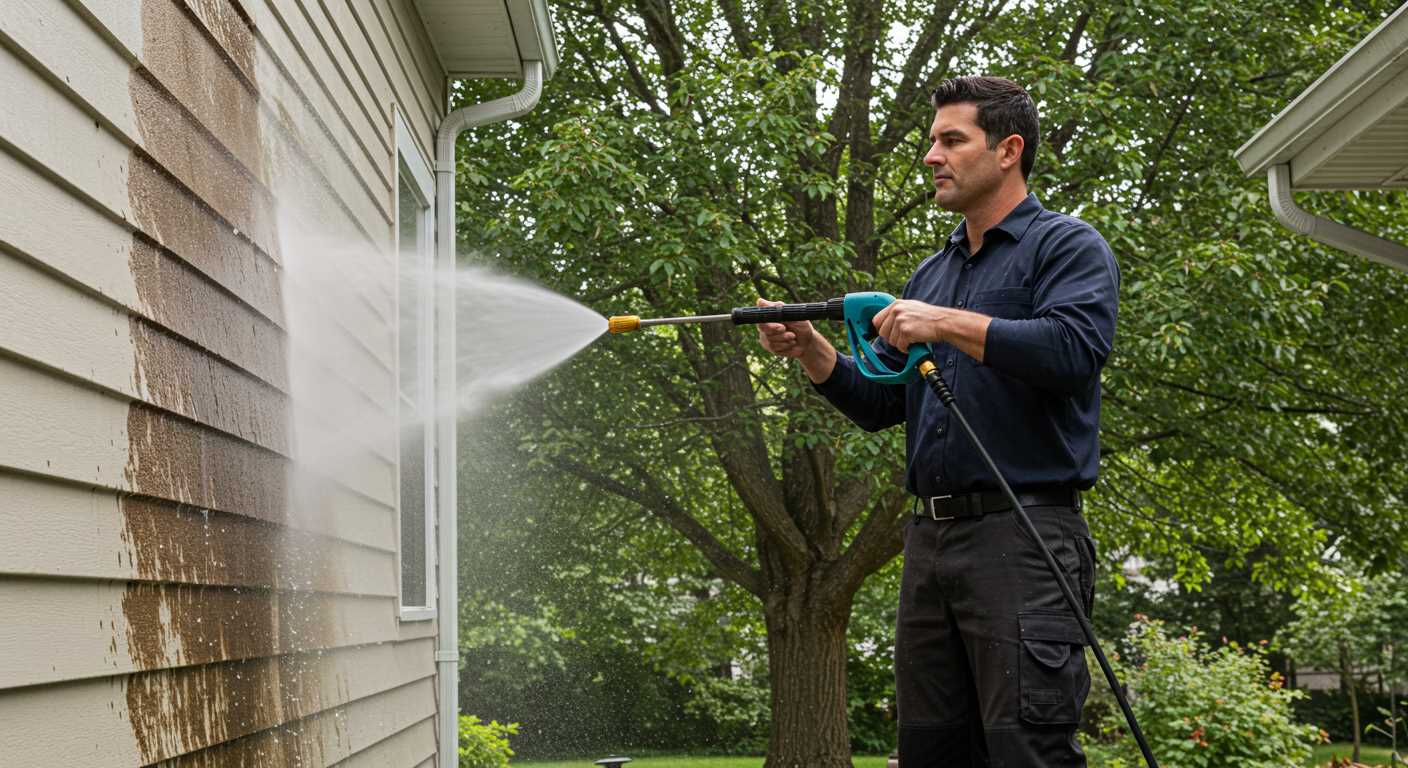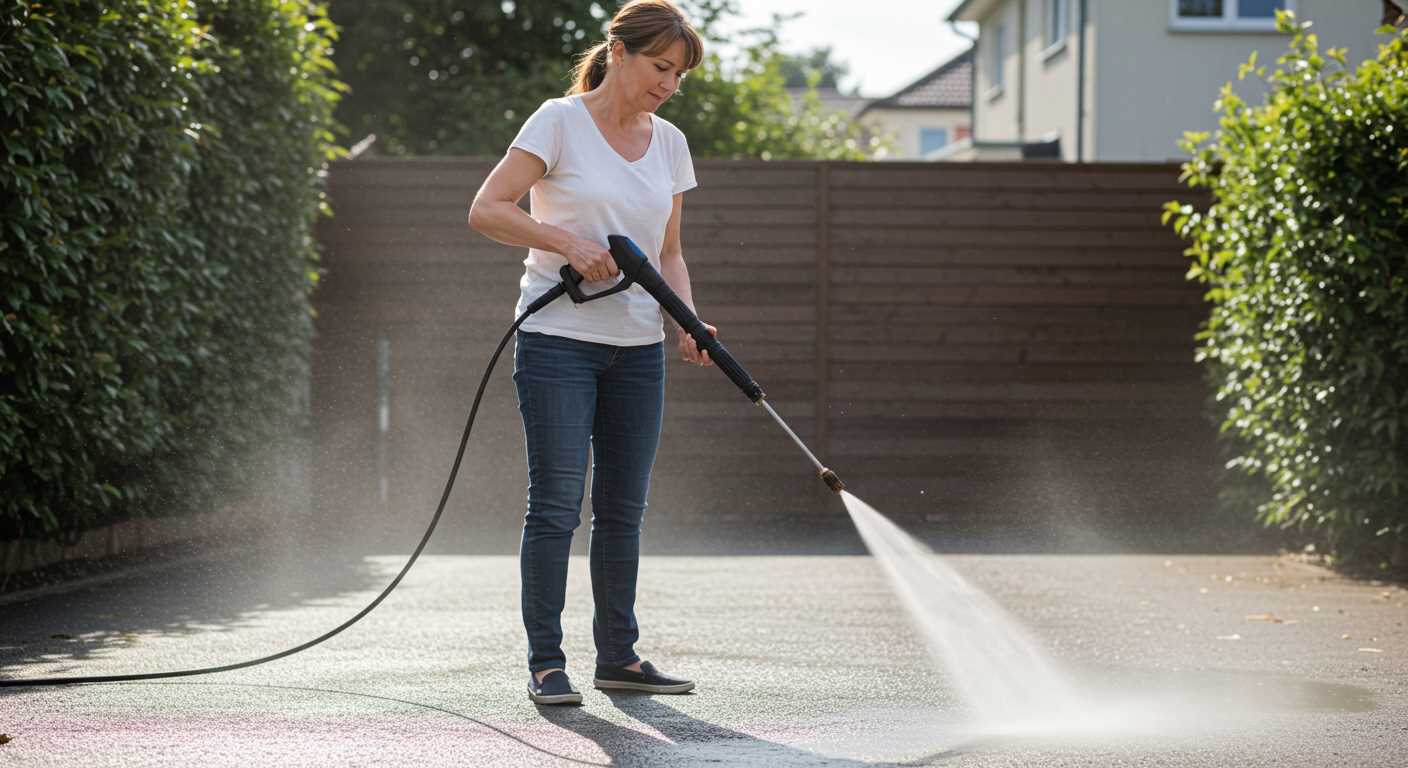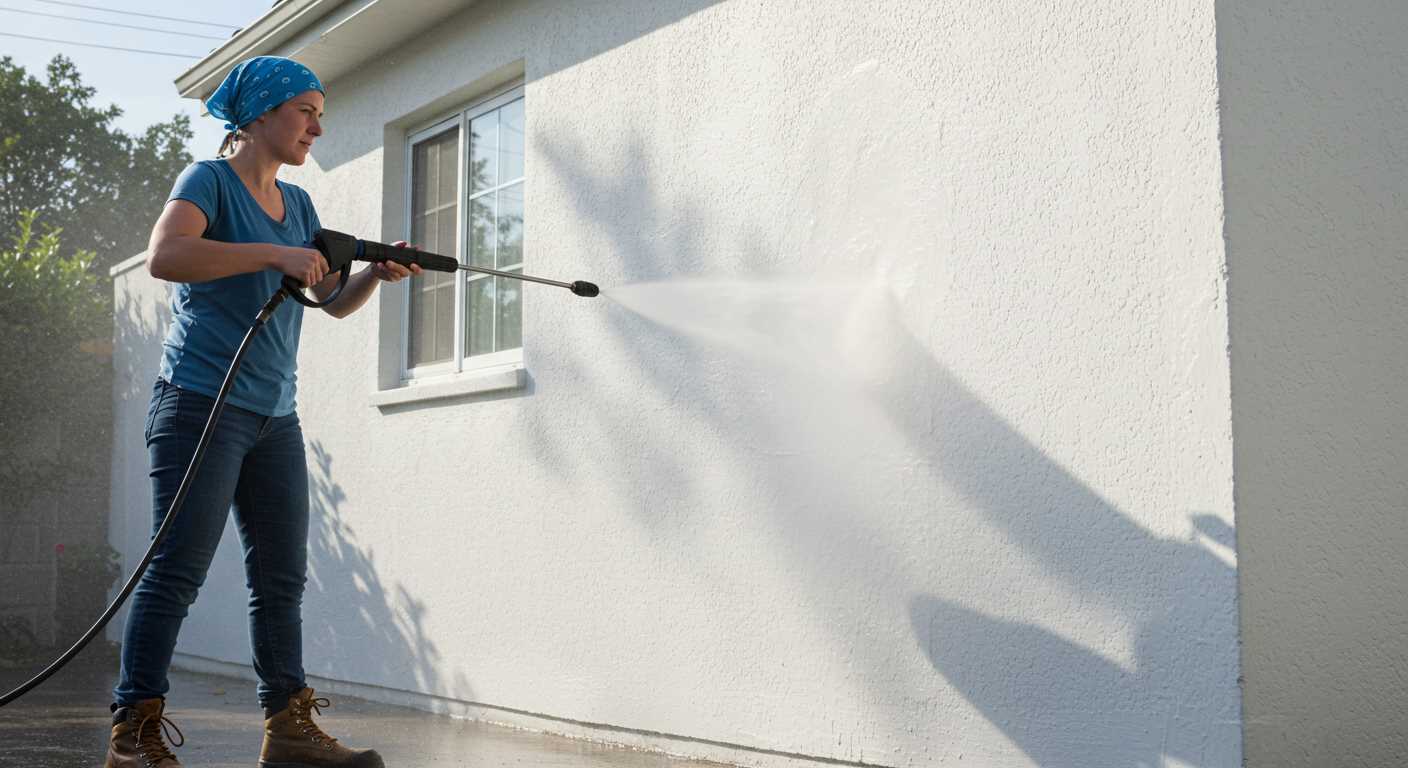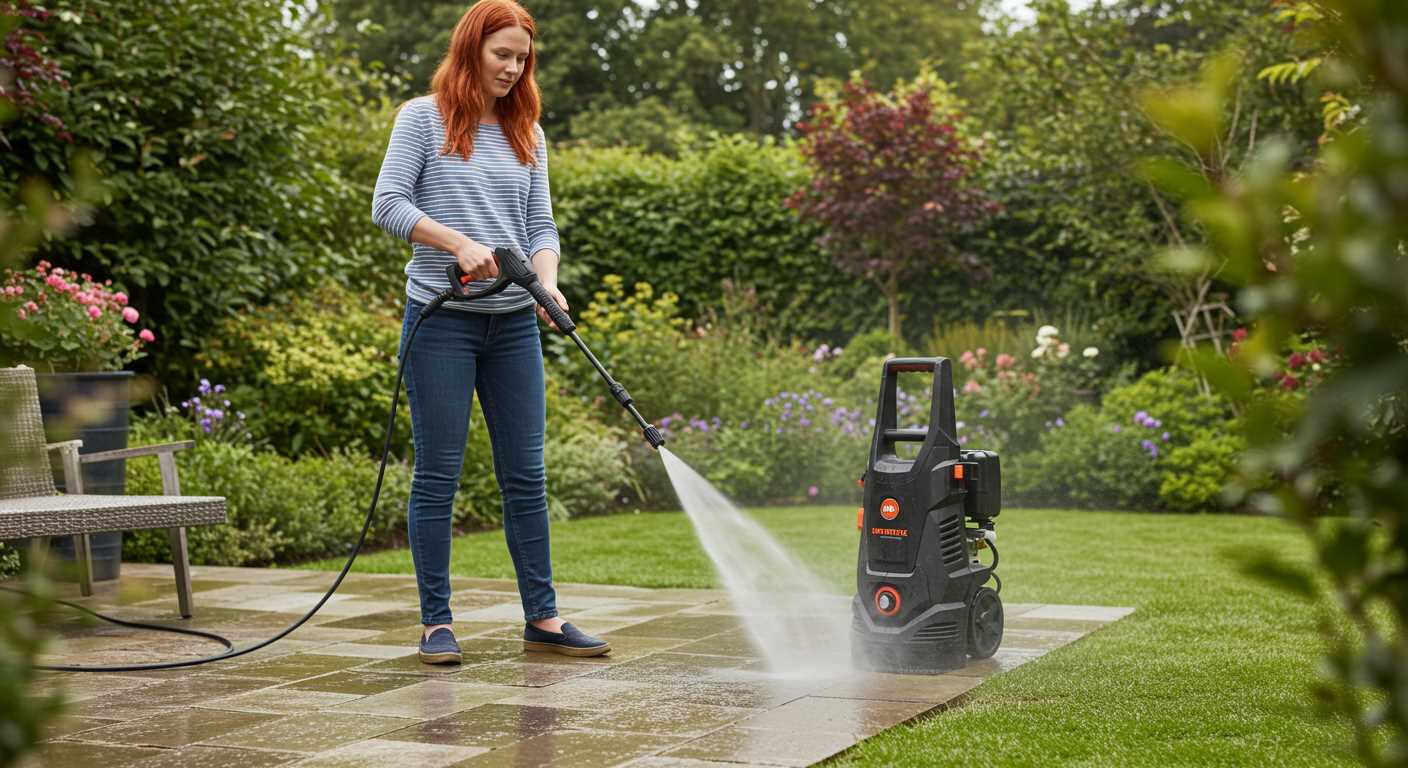



Using a high-pressure cleaning device on windows isn’t advisable. The force exerted can potentially cause cracks or shatter delicate panes. Such tools can generate pressures exceeding 3000 psi, which can far exceed the tolerance levels of standard glass installations.
If you insist on using one for cleaning, maintain a safe distance. Aim for at least three feet away from the surface, which helps mitigate the risk of damage. Additionally, it’s wise to use a wide-angle nozzle to disperse the water more evenly and reduce the impact force.
Furthermore, assess the condition of the windows before use. Any prior chips or weaknesses can make them more susceptible to shattering. In these cases, traditional cleaning methods might be a safer option. Seek guidance if unsure about the right approach.
Impact on Fragile Surfaces

Yes, high-velocity water jets can significantly damage delicate surfaces. For examples of susceptible materials, consider:
- Tempered Glass: While more resistant, certain conditions may lead to cracks.
- Standard Glass: Easily shattered under concentrated water pressure.
- Decorative Glass Features: Intricate designs may suffer from surface etching.
When utilising high-pressure systems, I recommend keeping a safe distance and using a broader spray nozzle. This method helps distribute the force over a larger area, minimising the risk of harm.
User Precautions
Before engaging in any cleaning tasks, consider the following precautions:
- Assess the surface carefully for any existing flaws or weaknesses.
- Adjust the pressure settings based on the material type; lower settings might suffice for fragile surfaces.
- Maintain a consistent distance of at least 2-3 feet to reduce impact force.
Paying attention to these guidelines will help protect your fragile installations from unintended harm, ensuring thorough cleaning without compromising the integrity of the surfaces. Regular inspections post-cleaning are advisable to catch any damage early.
Understanding Pressure Washer Mechanics
The force generated by a cleaning unit is determined by a combination of pressure output and water flow rate. Higher pressures can more effectively shift stubborn dirt, while an increased flow rate ensures thorough rinsing.
Typical units have pressure ratings measured in PSI (pounds per square inch) and flow rates expressed in GPM (gallons per minute). For example:
| Type of Equipment | Pressure Output (PSI) | Flow Rate (GPM) |
|---|---|---|
| Residential | 1500 – 3000 | 1.2 – 2.5 |
| Commercial | 2000 – 4000 | 2.5 – 5.0 |
| Industrial | 3000 – 5000 | 3.5 – 7.0 |
Understanding the mismatch between these two factors is critical. For instance, a unit with high pressure and low flow may be effective for targeted cleaning, yet it can leave residue if not rinsed adequately. Conversely, a high flow with low pressure will lack the force needed for tougher clean-up tasks.
The nozzle type also plays a significant role, as it influences spray patterns. A narrow jet (e.g., 0° or 15° nozzles) concentrates force on a small area, increasing the likelihood of damage on fragile surfaces. Adjusting to a wider angle can distribute water more evenly, reducing impact.
I have witnessed instances where using the incorrect nozzle alongside an overpowering force led to unintended consequences, especially with easily damaged materials. Always consider the specifications of the surface being cleaned, utilising appropriate settings to mitigate risk.
Finally, maintenance and alignment of the device itself are key to its operational efficiency. Wear and tear can diminish performance, making it essential to regularly check seals, filters, and connections. A malfunctioning unit not only risks disappointing results but may unintentionally cause harm to delicate surfaces.
Factors Influencing Glass Breakage Risk

Understanding the elements that contribute to potential damage is critical. The distance from which water is projected significantly affects impact intensity. Greater distances reduce force, while close proximity increases the risk of cracking. Adjusting the nozzle to alter spray pattern also plays a crucial role–narrow jets concentrate energy, amplifying the likelihood of shattering.
Type of Glass

The glass’s composition and thickness are pivotal. Standard window panes are more vulnerable than tempered or laminated varieties. Tempered options are engineered to endure strong impacts and thermal stress, whereas laminated glass contains interlayers that help hold it together upon impact, reducing fracture chances.
Water Temperature
Temperature variations can contribute to stress fractures. Cold water directed at a hot glass surface can induce rapid cooling and result in thermal shock. Using water at a moderate temperature diminishes the risk and ensures a safer cleaning process.
Additionally, the force of the liquid stream plays a role. A higher psi may create a more intense effect, causing structural integrity issues for weaker glass types. Recognising these factors is vital for anyone selecting equipment or methods for specific cleaning tasks to avoid untimely glass failures.
Types of Glass and Their Durability
Tempered glass stands as one of the most resilient options available. Produced through a thermal or chemical process that enhances its strength, it can withstand impacts and temperature fluctuations. This material is often used in shower doors and glass doors for its ability to shatter into small, blunt pieces, reducing injury risk.
Laminated glass incorporates a layer of polyvinyl butyral (PVB) between two sheets of glass. This configuration not only boosts security–preventing shattering upon impact–but also offers sound insulation. It’s frequently utilised in automotive windshields and high-security environments.
Annealed glass is a standard option, known for its flexibility and affordability. However, it lacks the hardness and durability of its tempered counterpart and is susceptible to cracking and breaking under extreme pressure or sudden temperature changes. This glass type is often found in windows and picture frames.
Bullet-resistant glass, designed to absorb and dissipate the energy from a projectile or external force, provides exceptional protection. While thicker and heavier than standard options, it’s typically installed in high-risk locations such as banks and government buildings.
Each category has its strengths. When selecting materials for projects or applications, consider not only aesthetic preferences but also potential stressors in the environment. Understanding the unique characteristics of each glass type will significantly influence choices and ensure safety. Remember, the durability of each type correlates closely with its intended use and exposure to varying forces.
Safe Distance and Pressure Settings
The optimal distance while using a cleaning device is usually between 2 to 3 feet from the surface. Closer proximity can increase the risk of shattering fragile surfaces, while being too far might reduce cleaning efficiency. Always start at a safe distance and adjust based on the results observed.
Recommended Pressure Levels
For delicate surfaces, a pressure level of 500 to 1000 PSI is advisable. This range allows for effective cleaning without overwhelming sensitive materials. Always refer to the manufacturer’s guidelines for specific pressure settings.
Technique Tips

- Avoid direct, concentrated sprays on sensitive areas. Use a fan spray pattern for wider coverage.
- Employ a steady, sweeping motion rather than a stationary blast to minimise impact concentration.
- Test in an inconspicuous area first to gauge the reaction of the surface.
By maintaining appropriate distance and pressure, I have consistently mitigated the risks associated with using high-powered cleaning tools on fragile materials. Safety should be the priority in every cleaning task.
Common Misconceptions About High-Pressure Cleaners
Many believe that high-pressure cleaners are safe to use on all surfaces without risk. However, this is misleading. The nozzle type, distance from the surface, and specific settings can significantly impact outcomes.
Another erroneous notion is that higher pressure always translates into better cleaning results. This is not true, as sometimes lower pressure combined with the right attachments can achieve superior results without causing harm.
Some users think that all cleaning agents can be used with these machines without consequence. In reality, certain chemicals may damage components or lead to environmental concerns, so it’s essential to verify compatibility before use.
There’s also a misconception regarding the type of surfaces that can withstand high-powered jets. Many assume that concrete and brick surfaces are invulnerable. While these materials are sturdy, the force can still penetrate porous areas or erode finishes.
One final point to note is the belief that experience isn’t required to operate these machines effectively. Proper training and understanding of equipment functions remain vital to avoid unintentional damage.
Preventive Measures to Avoid Damage
Maintain a distance of at least 3-4 feet when operating the equipment near any glass surfaces. This helps to reduce the impact force of water streams, which is crucial in preventing harm to delicate materials.
Utilise the lowest setting available on the device that still effectively cleans the desired surface. A high-pressure level increases the risk of unintended damage, especially for fragile items.
Regular Inspection
Conduct routine checks of all glass areas prior to cleaning. Look for existing cracks or weaknesses that may not withstand even moderate force. Addressing these issues beforehand mitigates the chance of further damage.
Appropriate Accessories
Consider using fan or wide-angle spray nozzles instead of pinpoint jets. This allows for a broader distribution of the water stream, significantly decreasing the concentrated force applied to any particular spot.
Finally, always ensure the cleaning area is free of loose debris. Twigs, rocks, or other stray objects can be catapulted into glass surfaces if caught in the stream, adding an unexpected element of risk. Taking these steps will help protect your glass installations effectively.
FAQ:
Can a pressure washer actually break glass?
Yes, a pressure washer can break glass under specific conditions. The effectiveness of a pressure washer in breaking glass largely depends on the pressure settings and the distance from which the water is sprayed. If the pressure is set too high and the nozzle is too close to the glass, the force of the water can cause shattering. However, most household glass, such as windows or light fixtures, is designed to withstand a certain amount of force, so breaking it with a pressure washer might require excessive pressure or a weak spot in the glass. It’s also important to consider the angle of the spray, as hitting the glass at a direct angle will increase the chances of breakage.
What types of glass are more likely to break when using a pressure washer?
Different types of glass have varying degrees of durability. For instance, tempered glass is designed to be much stronger and can withstand higher impacts compared to regular glass. However, it can still break if exposed to extreme forces, such as those produced by a high-pressure washer from a close range. Laminated glass, which consists of layers, is also less likely to shatter compared to single-pane glass. In contrast, older windows or thin glass can easily break if subjected to high pressure or improper spraying techniques. Ultimately, the risk of breaking glass with a pressure washer increases significantly if the glass is already weakened or damaged.







